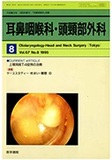Japanese
English
- 有料閲覧
- Abstract 文献概要
- 1ページ目 Look Inside
はじめに
いわゆるアレルギーマーチは,巨視的には胎児期に始まり,幼小児期の消化器症状,次いで皮膚症状,下気道症状を経て,成長してからの下気道症状の再燃や鼻アレルギーの出現に至るとされている1)。
小児期の下気道過敏症の主な抗原物質は室内の塵埃の中のヒョウヒダニとされている2)。これは,成人の通年性鼻アレルギーの主原因ともなる3)。その一方で,スギ花粉に代表される花粉抗原は季節性のアレルギー症状を主として成人に発症させ3),社会問題ともなっている。
今回われわれは,いわゆる花粉症が,はたして,一般的の信じられているように4),アレルギーマーチの一環として発症するのか否かの点に特の注目し,鼻アレルギーが疑われた患者を対象として,アレルギー疾患の原因を検索するうえでの重要な検査として幅広く活用されているCAP RAST法5)でコナヒョウヒダニ,スギ花粉,ヒノキ花粉特異的IgE抗体を測定し,その成績の関連性を検討した。
もし,確かに花粉症がアレルギーマーチの中に含まれてくるのであれば,コナヒョウヒダニ特異的IgE抗体陽性例の中に,スギ花粉やヒノキ花粉特異的IgE抗体陽性例が有意の高率に出現する可能性があるからである。
If cedar or cypress pollenosis can occur in the course of so-called allergic march which starts with digestive or airway tract allergy in infancy and childhood and reaches perennial nasal allergy in adulthood, pollen specific IgE should be determined significantly often in correlation with the IgE spe-cific to Dermatophagoides pteronyssinus or D. far-inae as they are the main allergens for asthma and perennial rhinitis.
We, however, could not find any significant corre-lation between D. farinae specific IgE titer and cedar pollen specific IgE titer (r=-0.05) using CAP RAST System in 286 patients with nasal allergy.

Copyright © 1995, Igaku-Shoin Ltd. All rights reserved.


